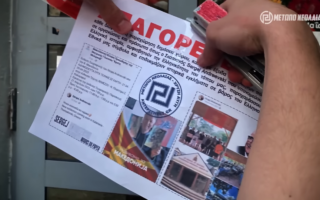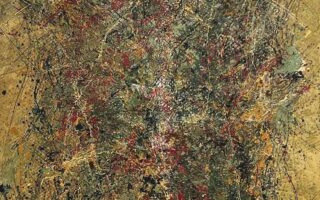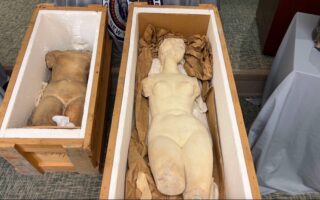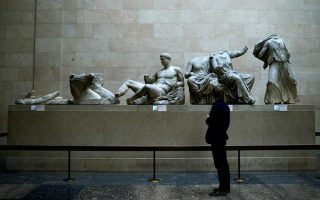The Moncalvo mystery: Italian appraiser bought the work for 600 euros
Kathimerini raises questions about the Italian claim that a drawing put up for auction was not the one stolen from the National Gallery in Athens
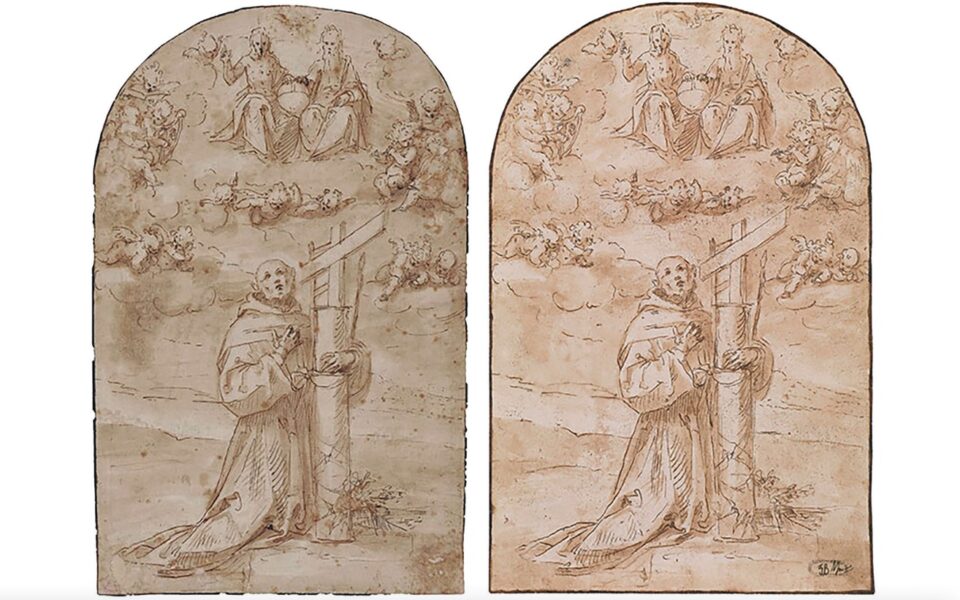
Il Moncalvo’s work “St Diego de Alcala in Ecstasy with the Holy Trinity and the Symbols of Passion,” a pen and sepia wash drawing, was the only artwork never recovered after the what was described as the “theft of the century” at the National Gallery in Athens in January 2012, with the thief later claiming at his trial that he destroyed it after escaping.
In 2019, a drawing that looked almost identical was withdrawn from an auction house in Florence before being sold, raising suspicions in the art world. Its fate – as well as its owner – was not made public until Thursday. Through documents from the Italian and Greek authorities, Kathimerini is now attempting to figure out what happened, as well as what actions were taken in Italy to determine that it was not identical to the work stolen from Athens.
It all began, as Kathimerini has revealed in earlier reports, when art historian Serena d’Italia spotted the controversial drawing in the online catalogue of the Pandolfini Auction House in 2019. It resembled Guglielmo Caccia’s (Moncalvo’s real name) work “Saint Diego de Alcala in Ecstasy with the Holy Trinity and the Symbols of Passion.” She informed her colleague, art historian and former curator of the National Gallery Marilena Cassimatis about the find and she offered to travel to Italy to examination the piece. However, this did not happen then or in the years that followed.
The statement
In January 2023, at his trial in the first instance, the thief claimed that the drawing had been destroyed. He said that in his attempt to escape from the gallery he had cut his arm on broken glass and wiped the blood on the drawing in his haste. He then stuffed it in his pocket and when he found hours later that it was torn, he flushed it down the toilet.
According to Italian documents that have been seen by Kathimerini, the drawing that was put up for auction allegedly belonged to an Italian identified as R.E.
According to Italian documents that have been seen by Kathimerini, the drawing that was put up for auction allegedly belonged to the Italian R.E., according to the self-proclaimed former lawyer and art lover. As he claimed to the Carabinieri, he bought a similar drawing to the one by Il Moncalvo in northern Italy for 350 euros, probably from an antique market, but he could not remember the year he acquired it, the exact place, or provide any proof thereof. In 2019 he decided to put it up for auction with other works because, he said, he was having financial problems.
An employee of the Italian auction house testified to the Carabinieri that before the drawing was withdrawn, they were contacted by A.M., an Italian art historian and researcher, who initially thought that the work in question might be the one that had been stolen from Athens. There followed a series of contacts between the auction house and the historian, “photographic and descriptive comparisons,” until it was decided that the two works were not identical. The drawing was returned to R.E. along with the rest of the unsold lot.
A few days later, however, in a somewhat unusual development, the appraiser reportedly expressed interest in purchasing the drawing. On October 10, 2019, he appears to have purchased it from the owner for 600 euros. “I remember that the buyer must have been an expert in the field because during the telephone negotiations he insisted on knowing many details,” the previous owner of the drawing told the Italian authorities.
Meanwhile, the Greek authorities kept coming back to the matter, asking for more information from the Italians. In September 2019, they had asked for the acquisition history that the auction house would not provide them. A few weeks later they received a response from Interpol Rome, which pointed out differences in the dimensions and framing of the two works. The Italians noted that the original drawing had been examined in Florence and included a mention of the expert opinion of A.M., who concluded that they were not the same.
In a new document, the National Gallery insisted on investigating the origin of the work and asked whether the Italian art historian had seen it in person or only through photographs.
A laconic reply
This was followed, according to the relevant documents, in December 2019 by a laconic response from Interpol Rome that there was no connection between the two works, that the art historian had made the documentation from the photograph on the auction house’s website, and that there was no possibility of further investigation regarding its origin.
The General Directorate of Antiquities and Cultural Heritage returned to the matter in September 2020, requesting the recovery and confiscation of the drawing, wherever it may be, and an expert examination in the presence of a Greek expert. The drawing had already been sold to the Italian appraiser.
Information about its previous owner and the final buyer was obtained from new depositions taken by the Italians in May 2021. The Carabinieri insisted at the time that no new evidence had emerged to contradict what they had already established.
